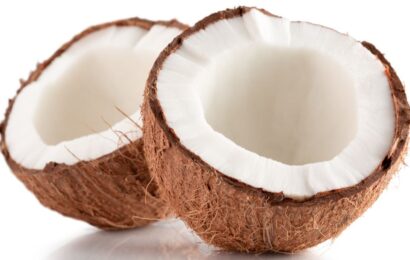Yogurt is one popular food — just head to the dairy case in your local grocery store and you may be amazed at the multitude of brands and varieties that line the shelves. Yogurt is also one of those “health foods” that gained in popularity starting in the 1960s. But is this a food that people with diabetes can or even should eat?
What is yogurt?
Love it or hate it, yogurt is here to stay. In fact, yogurt consumption in the U.S. has risen from 6.5 pounds per person in 2000 to 13.4 pounds per person in 2018, according to the website Statista. Yogurt is nothing new, though. It dates back to as far as 10,000 B.C. when our Neolithic ancestors started to domesticate cows, goats, buffalo, yaks and camels. Middle Eastern herdsmen carried milk in bags made from animal stomachs; the enzymes from the stomach curdled the milk, turning it into yogurt. Fast forward hundreds of years to the 20th century when, in 1932, the first yogurt laboratory and factory opened in France in 1932; in the U.S. the first laboratory and factory opened in 1941.
To get cutting-edge diabetes news, strategies for blood glucose management, nutrition tips, healthy recipes, and more delivered straight to your inbox, sign up for our free newsletter!
So, what is yogurt, anyway? The word yogurt is thought to come from the Turkish word “yogurmak,” meaning, to thicken, coagulate or curdle. According to the website Yogurt in Nutrition, “Yogurt is a milk product obtained by fermentation of milk specific microorganisms.” These microorganisms are the bacterial strains Lactobacillus bulgaricus and Streptococcus thermophilus (the FDA has stated that yogurt made in the U.S must include these two strains). The cultures are added to milk to begin the fermentation process. The bacteria convert the lactose from the milk to lactic acid; this thickens the milk and provides a tangy flavor. At this point, if desired, yogurt can be flavored with fruit, sweeteners, chocolate and other ingredients, including thickeners and stabilizers. The yogurt is then cooled and refrigerated.
Types of yogurt
No doubt you’ve seen some different kinds of yogurt and maybe even tried a few. Yogurt can be made with whole dairy milk, which has a rich flavor and a decent amount of fat (usually about 8 grams per cup). You might see farm-style whole milk yogurt, which has a layer of cream on top. Then there are low-fat and nonfat yogurts, which are made with low-fat and nonfat or skim milk, respectively.
Greek yogurt
Greek yogurt is traditional yogurt that has been strained so that the whey is removed. The result is a thick, textured yogurt that is rich in protein and is a good substitute for sour cream or mayonnaise.
Labneh
Labneh, which is commonly used in the Middle East, is more of a yogurt cheese or spread. It’s usually used on pita bread, toast and vegetables.
Icelandic yogurt
Skyr, or Icelandic yogurt, is similar to Greek yogurt but has a milder flavor.
Australian yogurt
Australian yogurt isn’t strained, but it’s usually made with whole milk and has a creamy consistency.
Whipped yogurt
Whipped yogurt has a lighter, almost mousse-like texture, thanks to air that has been whipped into it.
Sheep and goat milk yogurt
Yogurt from sheep’s or goat’s milk is also available, which are options for people who are allergic to cow’s milk.
Plant-based yogurts
For those who are lactose intolerant or who follow a vegan diet, plant-based yogurts are available. These include soy yogurt, almond yogurt, and coconut yogurt.
Drinkable yogurts and kefir
Finally, there are “drinkable” yogurts and kefir. Drinkable yogurt has a much thinner consistency than regular yogurt and is usually sweetened and flavored. Kefir technically isn’t yogurt, as it’s made with different types of healthy bacteria and also contains yeasts. But like yogurt, it has a similar, tangy flavor as yogurt.
Yogurt’s health benefits
Yogurt has a number of health benefits. It’s rich in the following nutrients:
· Protein
· Calcium
· Phosphorous
· Potassium
· B vitamins
Dairy yogurts may also be fortified with vitamin D. Plant-based yogurts may have a different nutrition profile than dairy yogurt; some plant-based yogurts are not fortified with calcium and vitamin D, for example. Almond and coconut yogurts may provide a minimal amount of protein. For this reason, it’s important to read the Nutrition Facts label.
One of the key benefits of yogurt is its probiotic content. Probiotics are good bacteria that support gut health and may play a role in other conditions including gastrointestinal diseases (e.g., Crohn’s disease and ulcerative colitis), diabetes, obesity, rheumatoid arthritis and even mental health. In order to benefit from probiotics, however, be sure to choose a yogurt that contains live and active cultures (it should say so on the yogurt container).
People who are lactose intolerant may find that they can tolerate yogurt, as yogurt has a low lactose content, and its beneficial bacteria aid with digestion.
Yogurt for diabetics: nutrition and comparison
An 8-ounce cup of plain, nonfat yogurt contains, on average:
· 137 calories
· 18 grams of carbohydrate
· 14 grams of protein
· 0.4 grams of fat
· 488 milligrams of calcium
An 8-ounce cup of plain, whole-milk yogurt contains, on average:
· 149 calories
· 11 grams of carbohydrate
· 8.5 grams of protein
· 8 grams of fat
· 5 grams of saturated fat
· 296 milligrams of calcium
An 8-ounce cup of plain Greek yogurt contains, on average:
· 216 calories
· 9 grams of carbohydrate
· 20 grams of protein
· 11 grams of fat
· 8 grams of saturated fat
· 227 milligrams of calcium
You’ll notice that the carbohydrate content is lower and the protein content is higher in the Greek yogurt compared to regular yogurt.
What about sweetened or flavored yogurts?
If you don’t care for the flavor of plain yogurt, you might reach for a vanilla or lemon-flavored yogurt or a “fruit on the bottom” yogurt. Sugar and fruit add flavor. But beware: All of that flavoring, fruit and sugar comes at a calorie and carbohydrate cost. Let’s take a look.
Take Yoplait Original Strawberry Banana Yogurt. A 6-ounce container has:
· 150 calories
· 27 grams of carbohydrate
· 6 grams of protein
· 2 grams of fat
Included in the ingredient list are reduced-fat milk, sugar, strawberries, banana puree and modified corn starch, all sources of carbohydrate. The carbohydrate content is considerable.
A light-style yogurt may be a better option. Note that there is no such thing as “sugar-free” yogurt. All yogurt contains sugar from milk — otherwise, you wouldn’t have yogurt! Here is Yoplait Light Strawberries ‘n Bananas fat-free yogurt, also 6 ounces:
· 90 calories
· 18 grams of carbohydrate
· 5 grams of protein
· 0 grams of fat
The ingredients contain nonfat milk, modified cornstarch, strawberries, sugar and banana puree, which are sources of carbohdyrate. Extra sweetness comes from two non-caloric sweeteners: acesulfame potassium and sucralose.
Carbohydrate and calorie-wise the light-style yogurt is a better option. But not everyone cares for the flavor of nonnutritive sweeteners. Check out Chobani Strawberry Banana Greek Yogurt. A 5.3-ounce container has:
· 130 calories
· 17 grams of carbohydrate
· 11 grams of protein
· 2.5 grams of fat
It contains no artificial sweeteners but does have the added thickeners fruit pectin and locust bean gum.
What about good old vanilla yogurt? Here is Dannon Low Fat Vanilla yogurt, 5.3 ounces:
· 130 calories
· 22 grams of carbohydrate
· 7 grams of protein
· 2 grams of fat
It’s a little lower in carbohydrate than fruited yogurt but not significantly so.
A better option is Chobani Less Sugar Madagascar Vanilla & Cinnamon Greek yogurt, 5.3 ounces:
· 120 calories
· 11 grams of carbohydrate
· 12 grams of protein
· 2.5 grams of fat
This yogurt has half as much carbohydrate as Dannon Low Fat Vanilla, almost double the protein, and zero nonnutritive sweeteners. It does have fruit pectin, locust bean gum, and guar gum. As does Icelandic Provisions Traditional Vanilla Skyr — but that, too, is only the following in a 5.3-ounce container:
· 120 calories
· 14 grams of carbohydrate
· 15 grams of protein
All in all, you have choices when it comes to yogurt. “Regular” fruited yogurt is the highest in carbohydrate and fat. Light-style fruited yogurt is certainly an option, but again, not everyone cares for the taste of nonnutritive sweeteners. In that case, vanilla Greek yogurt and skyr are quite a bit lower in carbohydrate, but no fruit.
Yogurt cost
Cost may be another factor for you. Greek yogurt and skyr cost quite a bit more than regular yogurt. Here are several examples of the cost of a container of various yogurts:
· Dannon Fruit on the Bottom: $0.69
· Yoplait Light Yogurt: $0.69
· Chobani Greek Yogurt: $1.00
· Stonyfield O’Soy Soy Fruited Yogurt: $1.09
· Fage Total Greek Yogurt: $1.69
· Siggi’s Icelandic Style Skyr: $1.69
· Icelandic Provision Skyr: $1.79
· Kite Hill artisan Almond Milk Yogurt: $2.19
How to choose the best yogurt for diabetics
The good news: you have choices. The not-so-good news: you have choices. The vast array of yogurts and skyrs on the market can be enough to turn you right away from the dairy case. But don’t let that happen. You can still enjoy yogurt and reap all that it has to offer by focusing on the following tips:
• Go easy with — actually, steer clear of — fruited yogurt.
In many cases, there is more sugar in these than actual fruit. A better bet is to choose plain or vanilla yogurt and add your own fresh fruit.
• Consider nutrition along with price.
Greek yogurt and skyr cost more, but if you can spring for the extra cost, you’ll get less carbohydrate and more protein, which is better, all around, for your blood sugars.
• Bypass the sugary toppings that come with some yogurts.
They’re empty, high-carb calories. If you crave some crunch with your yogurt, sprinkle some nuts, ground flaxseed or chia seeds into your yogurt, instead.
• If you choose or need to eat dairy-free yogurt, keep in mind that dairy-free doesn’t mean carb free.
Stonyfield O’Soy strawberry yogurt contains 29 grams of carbohydrate. Alternately, Kite Hill Strawberry almond milk yogurt weighs in at just 11 grams of carbohydrate.
• Remember that light-style yogurts generally contain nonnutritive sweeteners.
They’re certainly an option, but they still contain carbohydrate, and they may have an aftertaste.
• Read the Nutrition Facts label on the yogurt container.
This way, you’ll know what you’re getting when it comes to calories, carbohydrate, protein and fat.
• Try to choose a yogurt that contains live and active cultures to benefit from probiotics.
Want to learn more about yogurt? Read “Yogurt Nutrition Facts” and “Choosing the Best Yogurt for Diabetics.”





